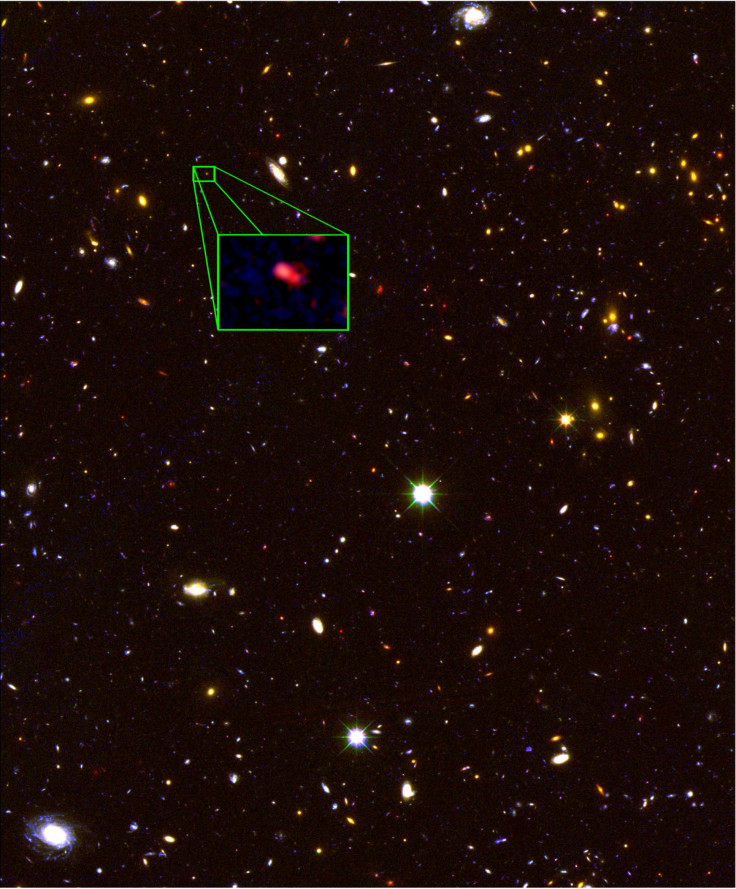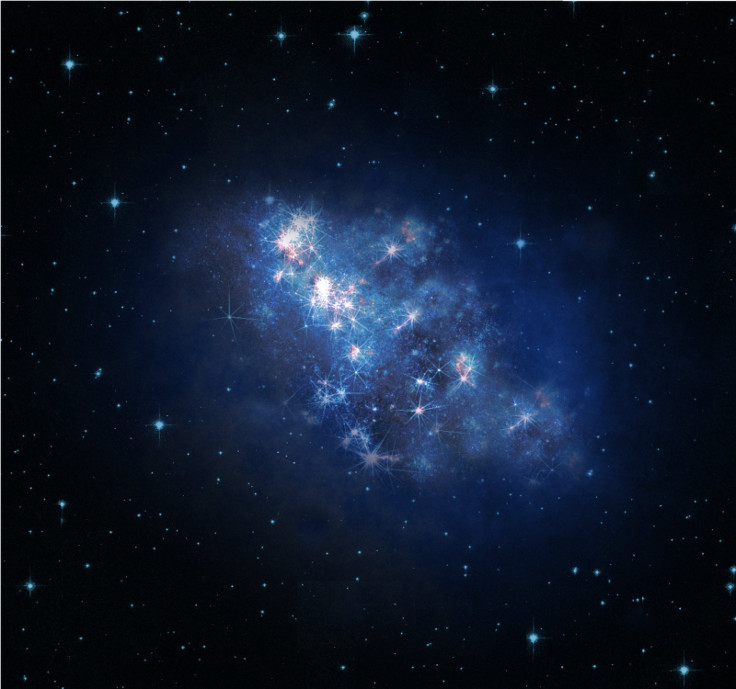New Galaxy Is The Most Distant Yet, Formed Just 700 Million Years After The Big Bang
Galaxy z8_GND_5296 is the most distant galaxy ever discovered. Astronomers from the University of Texas, Austin, discovered the galaxy as part of the Hubble Space Telescope's Cosmic Assembly Near-infrared Deep Extragalactic Legacy Survey, CANDELS.

Based on the light received, astronomers are observing the galaxy as it appeared 13.1 billion years ago, notes Space.com. The galaxy was discovered in the early universe and gives researchers a chance to look into the past. Second author Casey Papovich, from Texas A&M University, said in a statement, "We get a glimpse of conditions when the universe was only about 5 percent of its current age of 13.8 billion years." The researchers first selected candidate galaxies based on their colors in order to discover distant galaxies, older galaxies that could be observed to gain new insight on galaxy evolution.
The researchers then observed the wavelength of the light being emitted by the 43 CANDELS galaxies, in particular how much light appears in the red spectrum. This process is known as "redshift" and the higher wavelength indicates greater distance traveled by the light. Based on the observations, galaxy z8_GND_5296 had the highest ever recorded redshift, making it the most distant galaxy ever discovered.

The researchers were able to confirm their findings by observing the "hydrogen emission line," known as Lyman alpha signals, something that is visible in galaxies that have formed one billion years after the Big Bang but not in more recent galaxies. According to the researchers, they were expecting to find six distant galaxies but only spotted one, which they believe is due to a transitional period of the universe. The area of space the researchers were observing is believed to have been the period of time when hydrogen gas became ionized, thus obscuring the Lyman alpha signals.
In addition to being the most distant galaxy, z8_GND_5296 is experiencing increased star-formation activity. According to the researchers, the galaxy is "producing stars at a rate 150 times as fast as our own Milky Way galaxy" and indicates active star-forming galaxies and regions in the early universe may be more common than previously believed. The researchers want to explore the area where galaxy z8_GND_5296 was discovered in order to find new distant galaxies. The findings will be published in the journal Nature.
© Copyright IBTimes 2025. All rights reserved.






















